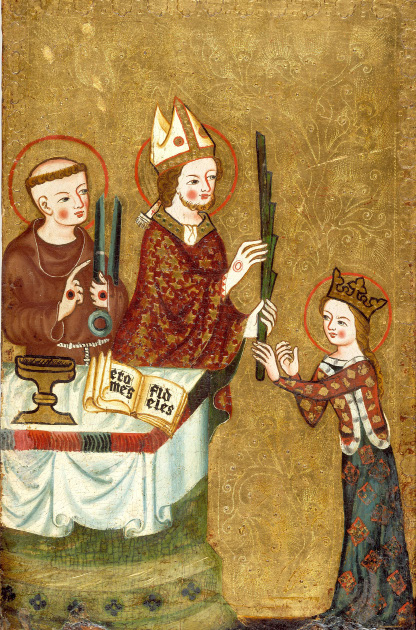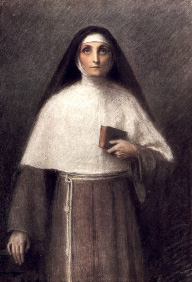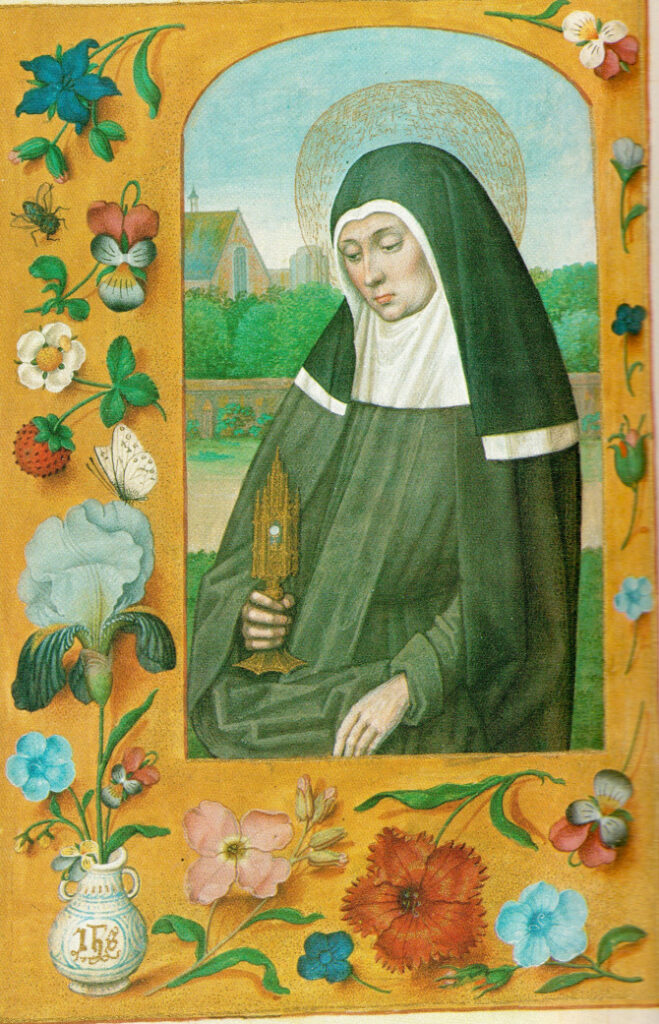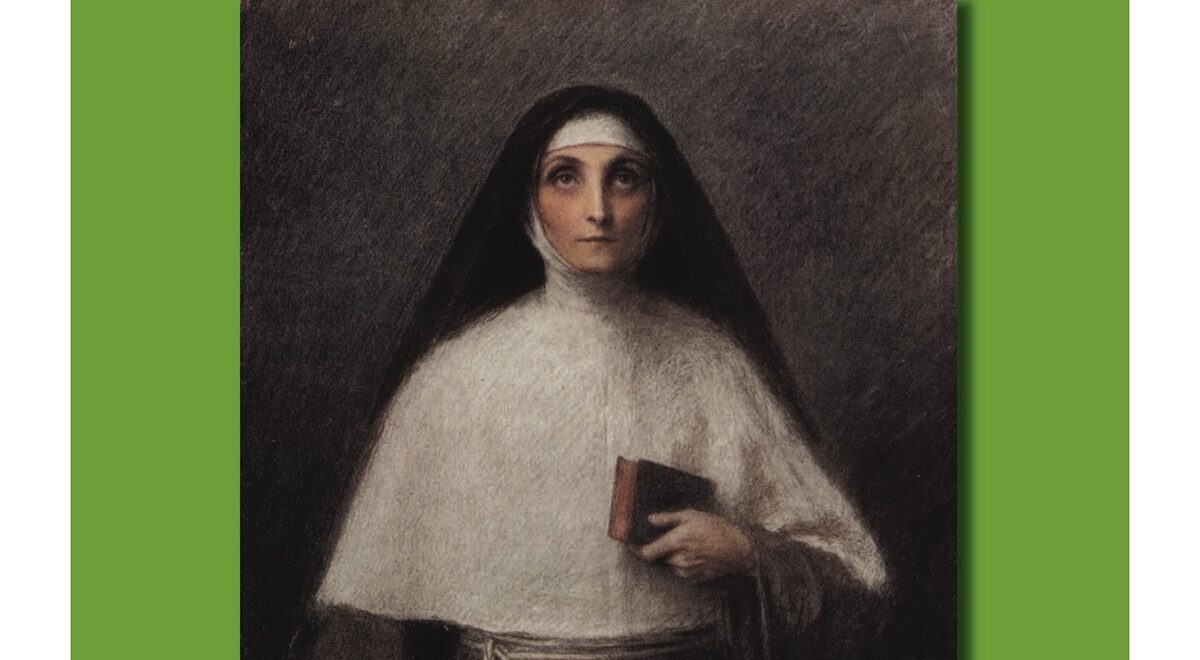
Dear Parishioners and Friends,
Today we honor the Feast of St. Clare of Assisi whose feast is celebrated on August 11.
Clare was born in 1193 or 1194 into one of Assisi’s noble families; her parents were Favarone and Ortolana Offreducio. As a young girl she became captivated by the preaching of Francis Bernadone and his small band of brothers who had begun a new religious movement based on the Gospel and a life of service to the poor and marginalized. They called themselves the Lesser Brothers.

Clare decided that she wanted to be part of their life. On the evening of Palm Sunday, March 18, 1212, she secretly made her way to the chapel of Saint Mary of the Angels, the Portiuncula, where Francis cut her blonde hair and she was vested in the habit of a nun. Her sister Agnes soon joined her, causing upheaval in their family.
Several months later, Clare and Agnes moved to San Damiano which became the first convent of the Second Franciscan Order. Officially they were called the “Poor Ladies of San Damiano.” Eventually other women joined them and today they are known as “Poor Clares.”
In 1216, Clare reluctantly accepted the title of abbess in accord with Church law, but she didn’t stand on that title, always willing to help her sisters in the most humble ways. Even when sickness took much of her strength, Clare continued to weave cloth and sew altar linens for the churches in Assisi.

One of Clare’s most ardent desires was to be able to live in complete poverty without the stable income that other women’s communities enjoyed. Contemplative nuns had always been supported by the lands they owned, but Clare wanted to gain a “privilege of poverty,” as she called it. Several popes had feared that such a life would be too difficult, but two days before she died, Clare finally received this “privilege” in writing from Pope Innocent IV.
Clare died on August 11, 1253 and was canonized a saint just two years later. Eventually a basilica was erected in her honor in Assisi where her body was interred.
I would like to speak about some of the images of Clare that speak about her life and personality. The first is a small panel from the Metropolitan Museum of Art in New York City. It shows the bishop of Assisi giving a piece of palm to Clare as Francis looks on. This panel was part of an altarpiece devoted to the life of Saint Clare and made for the convent of the Poor Clares in either Nuremberg or Bamberg, Germany around 1360. It recalls the entrance of Clare into the Franciscan community on Palm Sunday, 1212, as I mentioned earlier.
Another image, used on the cover of this week’s songsheet, comes from the Rothschild Book of Hours made in Belgium around 1510. This illumination shows St. Clare holding a monstrance with a small host inside, recalling the time when she prayed to the Eucharistic presence of the Lord to preserve the Sister’s convent from military attack. Clare is often portrayed with a monstrance because of this.

The image of Clare on the cover of today’s bulletin is by Eugène Burnand, who created it for an English version of The Little Flowers of St. Francis, published in 1910. It is one of 30 paintings by Burnand that depict various episodes in the life of St. Francis. Although this is a somewhat severe image of Clare, I think it portrays the contemplative side of her spirituality. It is said that Francis struggled as to whether he should lead a more active life of preaching and serving the poor, or a more contemplative life of prayer and solitude. So, he went to visit Clare and asked for her advice. She ended up telling Francis to undertake both aspects – active and contemplative. This is what we friars refer to today as contemplative fraternities in mission. The simple, quiet life of the Poor Clares continues to inspire Franciscans of all stripes – men, women, religious, secular – to live the Gospel as Francis first taught, in joy and simplicity of heart. Happy Feast Day to all!
Blessings on your week ahead!
Fr. Tim Shreenan, O.F.M.
Pastor



